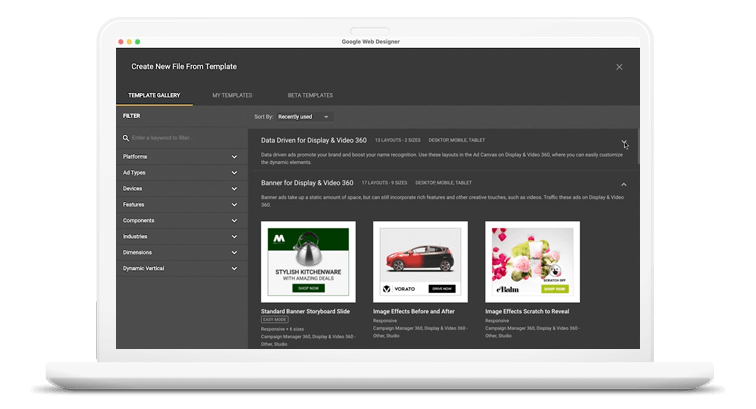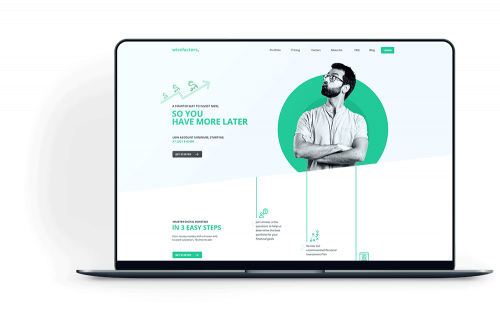The Role of Website Design in Enhancing Brand Identity and Recognition
The Role of Website Design in Enhancing Brand Identity and Recognition
Blog Article
Modern Web Site Design That Records Attention and Transforms
In a progressively digital landscape, modern website layout has emerged as a pivotal element in capturing customer interest and driving conversions. As we check out these vital elements, it becomes clear that recognizing their interplay can substantially impact an internet site's efficiency and user contentment.
Value of Visual Pecking Order
Aesthetic pecking order is an essential component in web site style, as it guides customers' interest and improves their overall experience. By tactically arranging content, designers can direct users to one of the most crucial info first, consequently enhancing involvement and improving usability. Reliable aesthetic power structure utilizes different strategies, consisting of dimension, spacing, comparison, and color. Bigger aspects naturally draw the eye, while contrasting colors can emphasize key messages, making them attract attention among even more restrained components.
Integrating a rational circulation in content plan is necessary; for example, positioning the most essential information on top of a page promotes instant recognition. Regular use of typography, such as differing font dimensions and styles, aids develop a clear material framework. This company not just aids in navigation but also constructs trust, as individuals feel more comfortable when they can easily discover what they are seeking.
Eventually, a well-executed aesthetic power structure not just boosts aesthetic appeal yet also significantly influences customer actions. By focusing on crucial elements and making sure a smooth experience, developers can properly transform site visitors right into clients, reinforcing the value of this foundational design principle in modern internet site growth.
Responsive Design for All Tools
Producing a seamless experience across numerous devices is crucial in today's digital landscape, where individuals gain access to sites from desktops, tablet computers, and smart devices alike. Receptive style is an essential method that ensures sites adapt fluidly to different screen sizes, resolutions, and orientations. By employing adaptable grids, images, and CSS media questions, designers can produce formats that keep visual honesty and performance, despite the gadget being utilized.
The importance of receptive design expands beyond aesthetics; it directly affects user involvement and conversion prices. A site that functions well on all tools motivates longer brows through and reduces bounce rates, as users are more probable to interact with web content that is very easy to browse. Search engines, particularly Google, focus on mobile-friendly websites in their positions, making responsive layout a vital component of search engine optimization (SEARCH ENGINE OPTIMIZATION)
Integrating responsive layout not just enhances user experience however also improves the advancement process. By producing a solitary website that functions throughout gadgets, businesses can conserve time and sources compared to creating separate mobile and desktop computer variations. Eventually, receptive design is a fundamental approach for modern internet site design, guaranteeing access and satisfaction for all users, regardless of their tool.
Engaging Interactive Components
While a receptive style lays the foundation for a useful internet site, including appealing interactive elements is vital for recording customer attention and cultivating much deeper connections. Website Design. Interactive aspects, such as animations, quizzes, and clickable infographics, create an extra vibrant individual experience, urging site visitors to invest more time on the site
Including interactive attributes can likewise lead users with complex information, making it less complicated to digest web content. As an example, interactive sliders can show product variants, while embedded video clips can provide demonstrations or reviews that resonate even more than fixed pictures or message. Furthermore, gamification strategies, like benefits for completing jobs or involving with material, can enhance user inspiration and retention.
Reliable use interactive components not only improves the user experience however can also bring about higher conversion prices. By making interactions helpful and pleasurable, organizations can cultivate a sense of loyalty and count on with their audience. Nevertheless, it is necessary to balance interactivity with efficiency; extremely complex functions might prevent website speed, negatively influencing user contentment. Inevitably, incorporating well-designed interactive aspects can dramatically elevate a web site's efficacy, driving engagement and conversions in today's competitive digital landscape.
Streamlined Navigation Practices
Efficient navigation is a keystone of any successful website, as it straight affects customer experience and material access. Structured navigation practices make sure that individuals can quickly situate details, boosting their interaction with the site. A well-structured navigation menu should be instinctive and straightforward, commonly including a restricted number of key classifications to avoid frustrating site visitors.
To click accomplish streamlined navigating, developers must focus on an ordered framework that logically organizes content. Executing breadcrumb tracks can give customers with context regarding their existing area within the website, permitting seamless backtracking. Furthermore, making use of drop-down food selections can properly save space while still offering accessibility to subcategories.
Receptive design is critical, as navigating needs to be useful throughout all gadgets (Website Design). Mobile individuals, specifically, gain from touch-friendly food selections and retractable areas that maintain usability without endangering visual appeals

Efficient Call-to-Action Techniques
A well-crafted call-to-action (CTA) is vital for guiding customers toward preferred results on a website, as it encourages them to engage with content or make a purchase. To maximize their effectiveness, CTAs ought to be clear, compelling, and purposefully put throughout the site.
First, utilize action-oriented language that communicates urgency or value, such as "Get Started," "Sign up with Now," or "Claim Your Price cut." This language not just encourages individuals however likewise sets clear expectations about the following actions.
Second, think about design aspects; CTAs ought to stick out visually with contrasting colors, adequate whitespace, and famous positioning. A button that is easy to see and click increases the chance of customer interaction.
Additionally, individualizing CTAs based on individual habits or demographics can substantially improve involvement. Tailored messages resonate extra with users, visit their website driving higher conversion rates.

Final Thought
In verdict, modern web site design highlights the integration of aesthetic pecking order, receptive formats, engaging interactive aspects, structured navigating, and efficient call-to-action strategies. These elements jointly boost user experience, guaranteeing that site visitors continue to be engaged and inspired to check out web content further. By prioritizing these layout concepts, organizations can dramatically enhance customer retention and conversion rates, inevitably resulting in better success in the digital landscape. The continual development of website design highlights its essential function discover this in reliable online interaction and marketing.
In a significantly electronic landscape, contemporary site style has arised as a crucial variable in catching user focus and driving conversions.Aesthetic pecking order is a vital aspect in site design, as it overviews customers' focus and boosts their overall experience.The value of receptive design extends beyond looks; it straight impacts customer engagement and conversion prices.Including receptive layout not just boosts user experience but likewise streamlines the advancement process. Ultimately, receptive design is a fundamental strategy for modern website layout, ensuring access and satisfaction for all customers, regardless of their tool.
Report this page